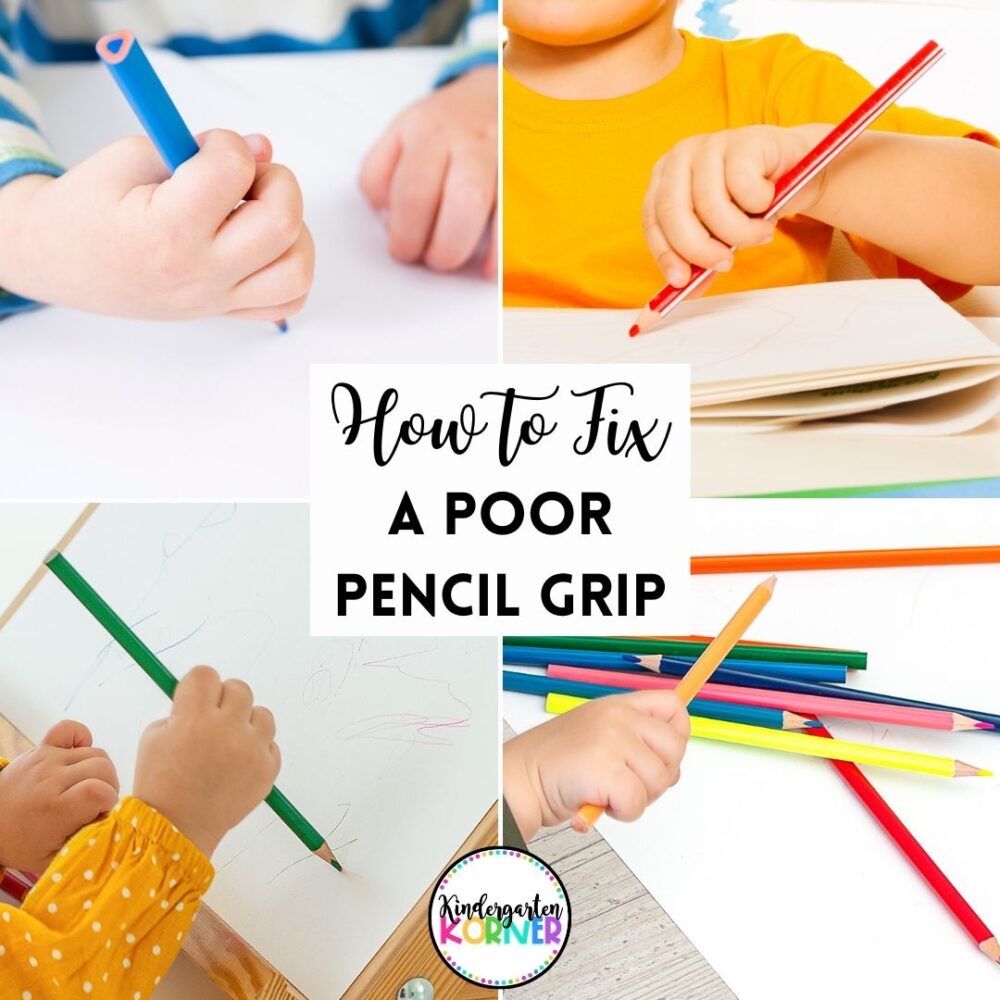
As a kindergarten teacher, one of the things I see kids struggle with the most is holding a pencil properly. From fisting pencils to wrapping the third finger, I have seen it all when it comes to incorrect pencil grips. In this post, I will share 10 tips for correcting poor pencil grips that will set kids up for writing success!
What Causes a Poor Pencil Grip?
Let’s begin by discussing what causes a poor pencil grip. Fine motor weakness, in particular weak finger muscles, often results in an awkward grip. When the finger muscles are underdeveloped, it leads to a lack of coordination. You will see kids try to hold the pencil any way they can in order to stabilize it. Increasing fine motor play opportunities will help to build the intrinsic muscles of the hand, and it should improve hand coordination as well. Another cause of a poor pencil grip that some might find surprising is weak shoulder muscles. The muscles of the shoulder and arms are involved in the act of grasping a pencil and writing. In addition to working on fine motor skills, we also want to incorporate activities that build shoulder strength.
What Does a Correct Pencil Grip Look Like?
A few years back, I had a student who wrapped her middle finger around the front of the pencil. I wrote on one paper, “Please work on pencil grip at home.” The mom emailed me saying that she didn’t know what was wrong with the way her daughter was holding the pencil. This taught me that I should never assume my students’ parents know what a correct grip looks like. Now, at the beginning of the school year, I include this picture in my Curriculum Night presentation.
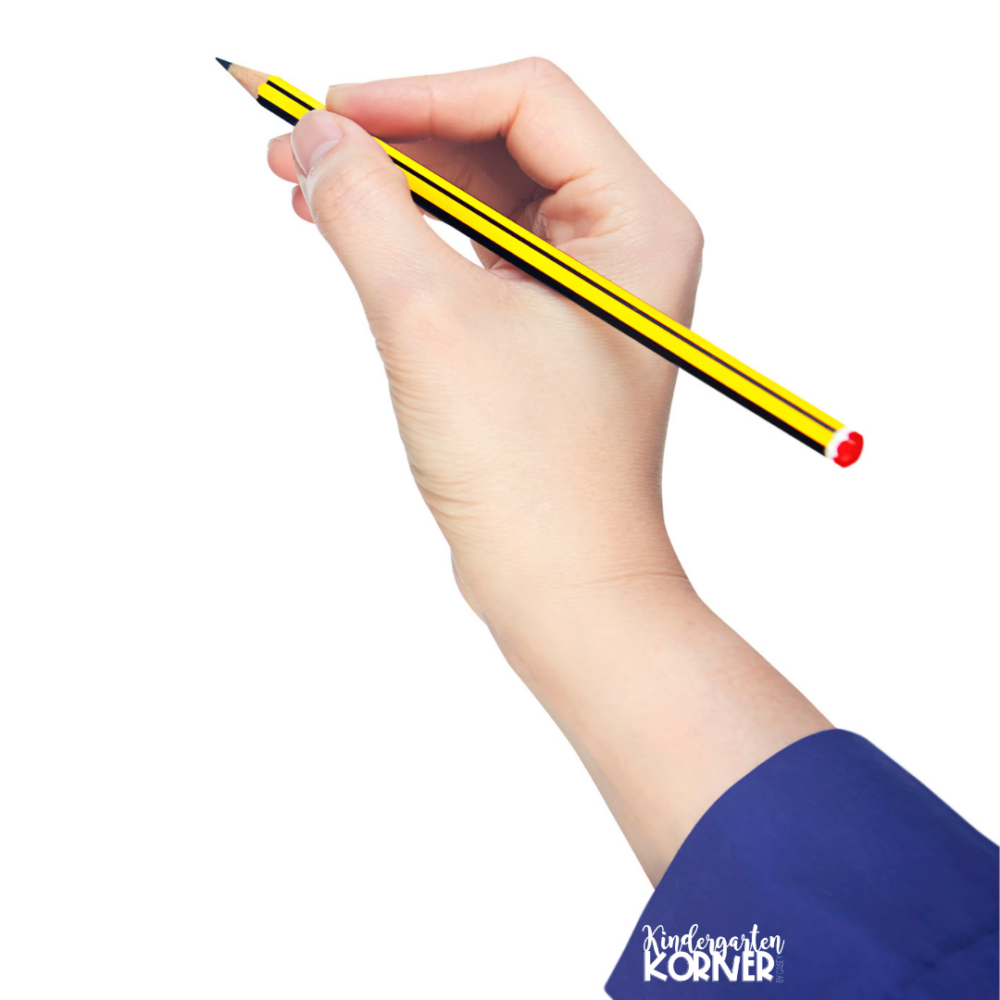
A correct pencil grip looks like this. The thumb and index finger pinch the pencil, which rests on the middle finger. The shaft of the pencil sits in the space between the thumb and the pointer finger. This is referred to as the tripod grasp.
The Pincer Grasp
To build up to the tripod grasp, it is important for your child or student to first work on the “pincer grasp.” This term refers to holding a small object between the pointer finger and thumb. The pincer grasp is the foundation for holding a pencil correctly.
~This post contains affiliate links.
10 Tips for How to Correct a Poor Pencil Grip
The tips I will share with you in this post involve activities that will work on the pincer grasp, building fine motor skills, strengthening the shoulders, and finally working on the tripod grasp. The combination of these skills should help your learner correct a poor pencil grip in no time! To keep your child or student engaged, begin by focusing on fun hands-on activities to build hand strength and save the paper and pencil tasks for last.
1. Encourage Building with LEGOS
Legos are a kid-favorite, and they are the perfect tool for working on pencil grip. Regular size Legos force the child to use the pincer grasp. Notice how the child’s hands in the photo below pinch the Legos using the same fingers involved gripping a pencil.
2. Incorporate Activities with Tweezers
Similar to Legos, using tweezers will help work on the pincer grasp. Tweezers build hand strength with the act of squeezing to pick up an object. My son loves this sorting pie. It is a great way to work on pencil grip technique and math skills at the same time.
This fine motor set is another one of my favorites. It includes four different tools that work on fine motor skills and will help with pencil grip.
3. Stringing Beads
Stringing beads on laces or pipe cleaners is another way to work on the pincer grasp getting those little hands ready for writing! You can use any beads. As a teacher, I like to incorporate the fine motor play with learning so I prefer to use letter beads or letters for lacing. Kids love this activity!
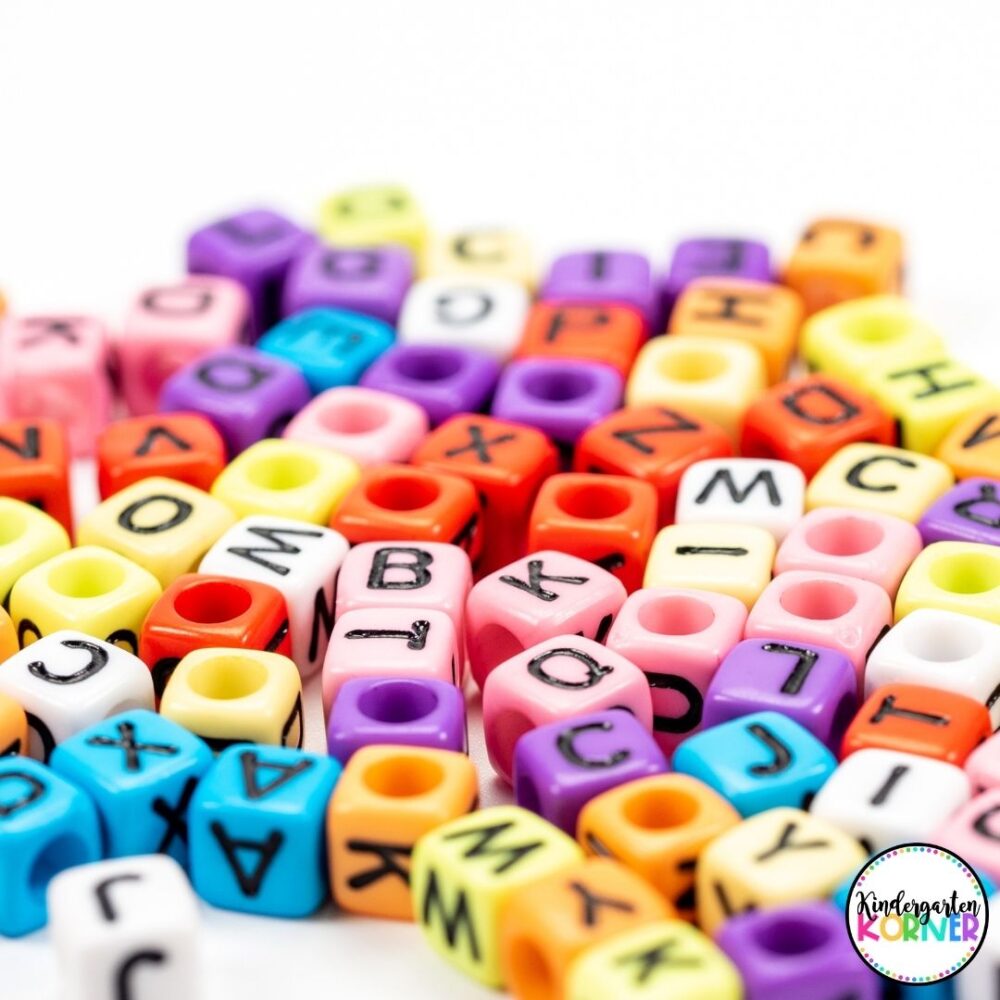
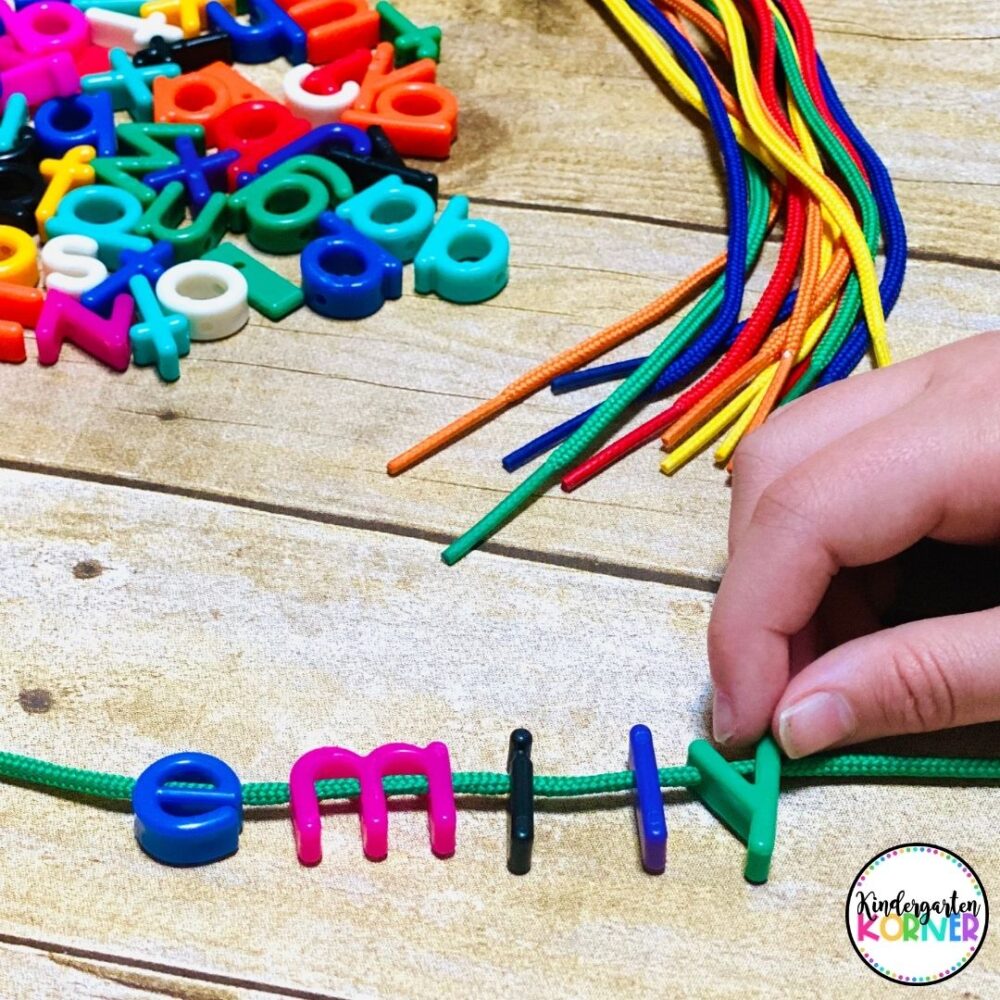
4. Have fun with Chalk, Paint Sticks, and Markers!
My students as well as my own kids at home love sidewalk chalk. As children approach kindergarten, use the regular size chalk seen here as opposed to the large chalk. Often with the jumbo chalk, I see kids use their fists to hold it. If the goal is developing a proper pencil grip, we want the kids holding the chalk just as they would hold pencils as seen in the photo here. Another tip is to break the chalk so that it is shorter, which makes it easier for a child to hold it with the correct grip.

Kwik Stix, created by The Pencil Grip, Inc., are another favorite of mine if you are looking to correct a poor pencil grip. These washable tempera paint sticks come in three sizes. As your child approaches kindergarten, choose the thin size to reinforce grip. My son loves using these at home!
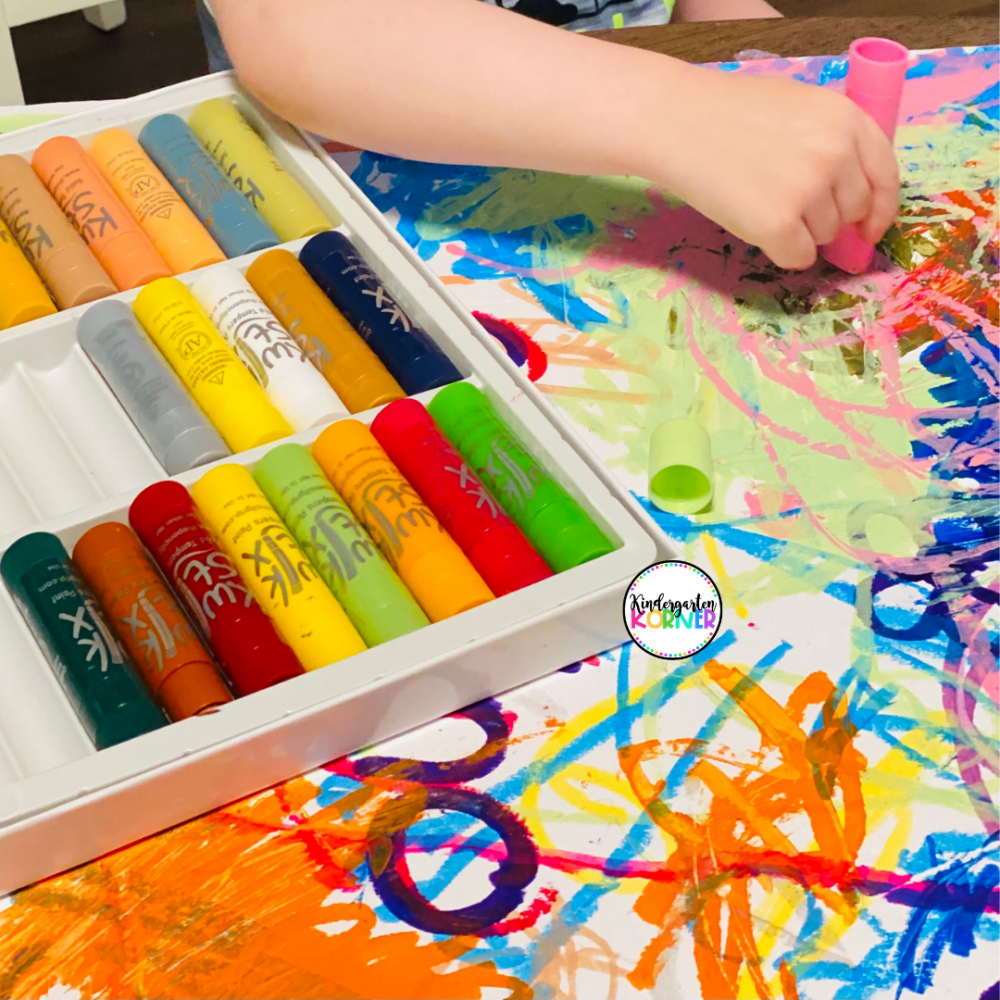
Magic Stix, also from The Pencil Grip, Inc, are another fun art tool that promotes proper grip. The triangular shape of these markers helps emerging writes establish and maintain proper handwriting position.

5. Peeling Stickers
This is a simple, fun, and effective way to work on the pincer grip and fine motor skills. Again, notice how the hand uses the thumb and index finger to peel the stickers. You could create a sticker chart or book with your learner’s favorite stickers.
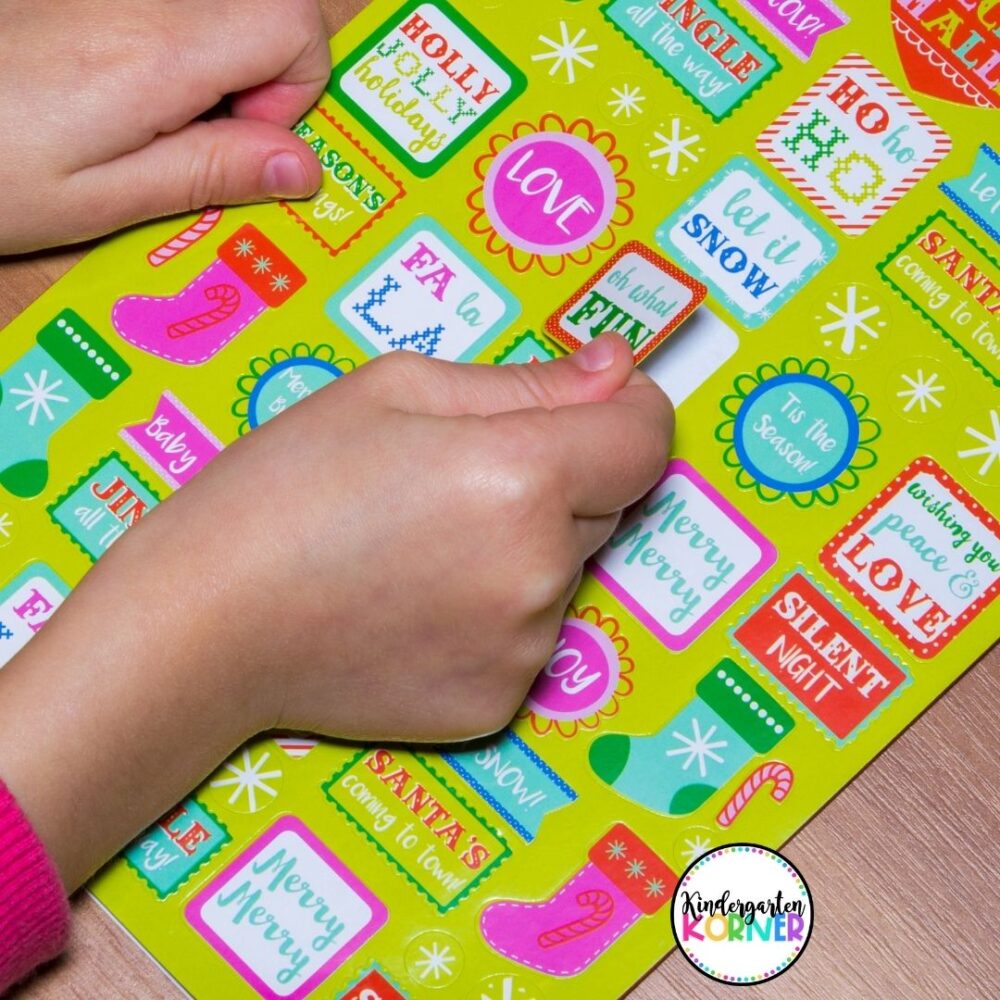
6. Have fun with clothespins!
Clothespins are another great fine motor tool to work on the pincer grasp. You can make a game where your child squeezes and attaches clothespins to cardstock, or use twine to hang pictures with clothespins.
7. Incorporate activities for Shoulder Strength
In addition to fine motor activities, don’t forget how important shoulder strength is for handwriting. Hanging from the monkey bars, laying on your belly when playing or coloring, and doing wheelbarrow walks are all great ideas for strengthening the shoulders.

8. Use Golf Pencils for Writing
Okay, so you’ve been building fine motor skills, hand strength, and shoulder strength. Now, it’s time to get ready to write! A few years ago, an OT visited my classroom to observe. One of the suggestions she made was to switch from the Ticonderoga Beginners I was using to Ticonderoga Golf Size Pencils. Interestingly, using a smaller pencil to write helps kids build hand strength and results in increased endurance during writing tasks. The hand positioning using the golf pencils promotes the tripod grasp mentioned earlier. Since I switched my kindergarteners to these pencils, I have seen great improvements with pencil grip. The only downside is that I do have to sharpen these more than the other pencils, so I buy golf pencils in bulk now. They are totally worth the investment!

9. Broken Crayons Still Color
Like the golf pencils, shorter crayons will have the same effect. So don’t be so quick to throw away those broken crayons. Try giving your child or student a shorter crayon and see what happens.
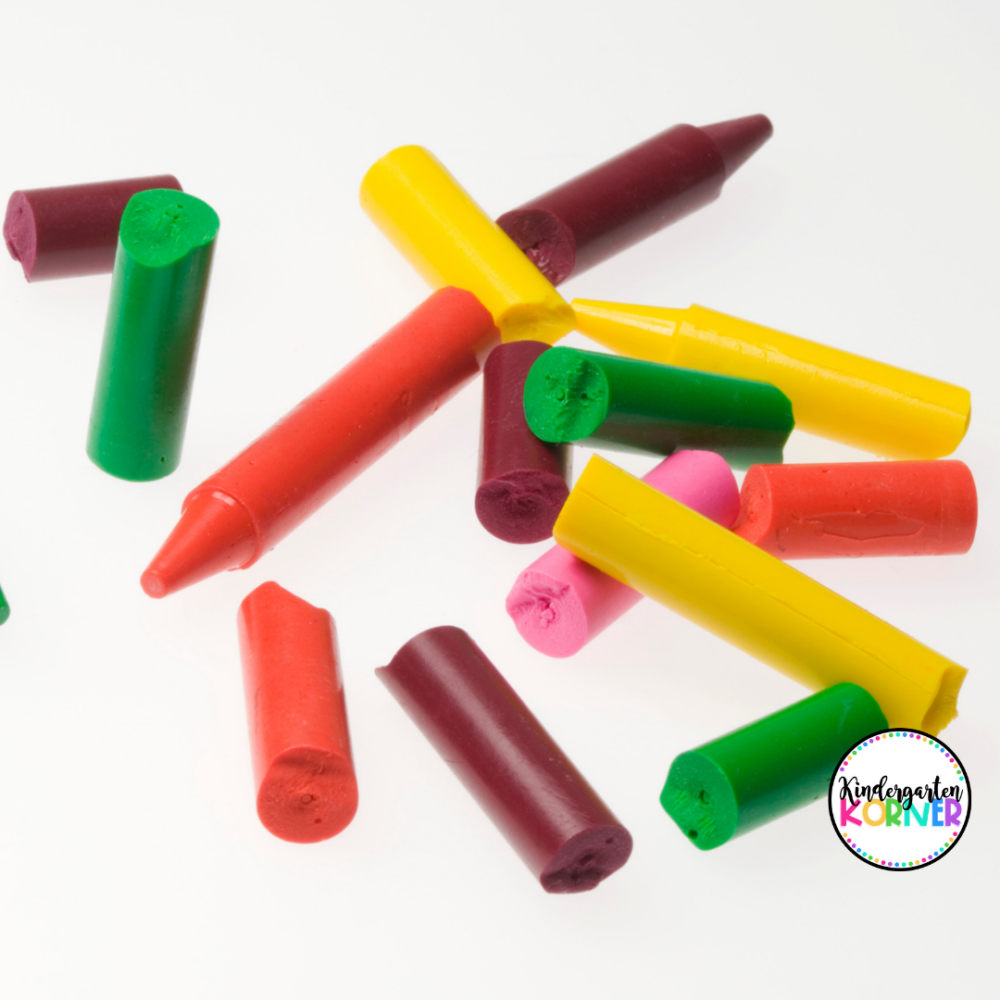
10. Use a Pencil Gripper if Needed
If you’ve tried everything else and your little learner still cannot seem to hold a pencil correctly, you might want to try a pencil gripper. I have tried different styles, and some are more effective than others. These pencil grippers were recommended by my school OT, and they work very well. I do not give them to all of my students – only those who still struggle with grip. I like how these pencil grips encourage the proper handwriting position, and they are comfortable for the kids.

And there you have it…Ten Tips for How to Correct a Poor Pencil Grip! Remember, developing the proper grasp takes time. Incorporate these activities into daily play, and you will see results over time. If you try incorporating these tips at home or in the classroom, I would love to hear from you! Comment below.
Read more about 10 of the Best Fine Motor Toys for Kindergarteners!



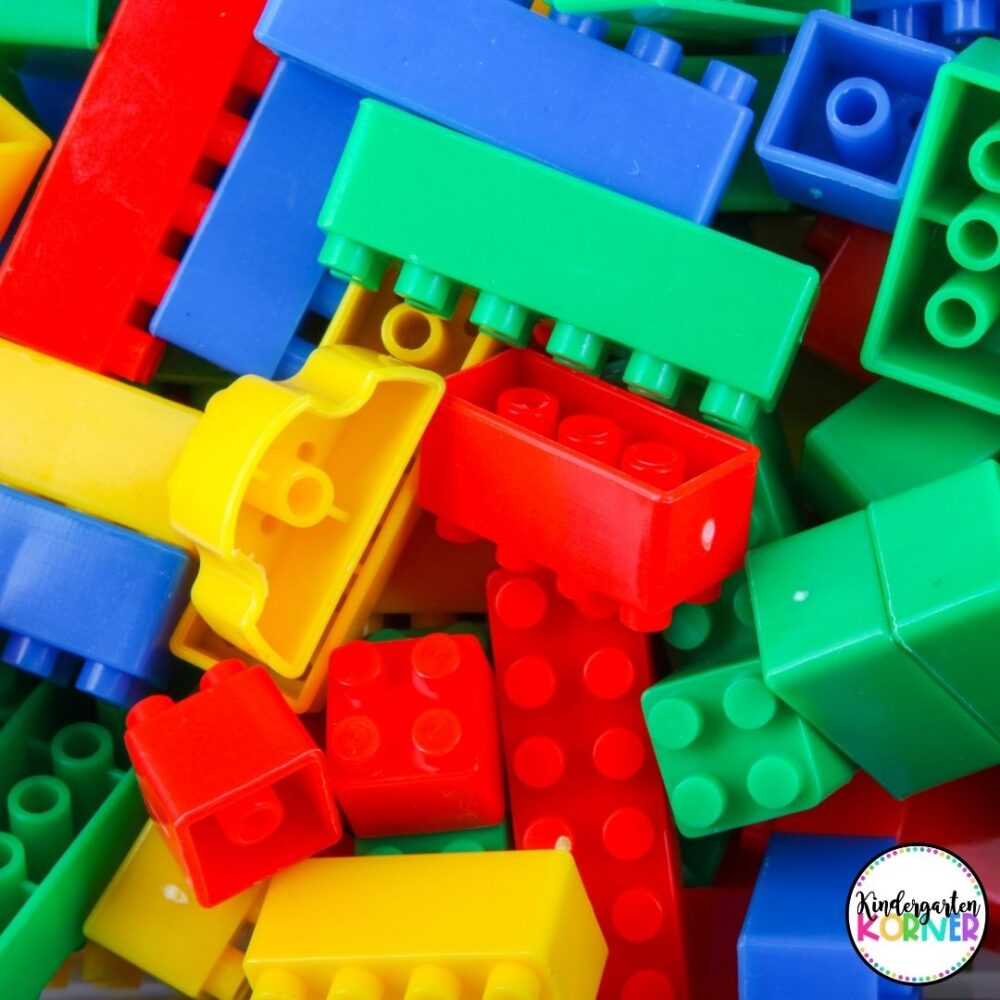
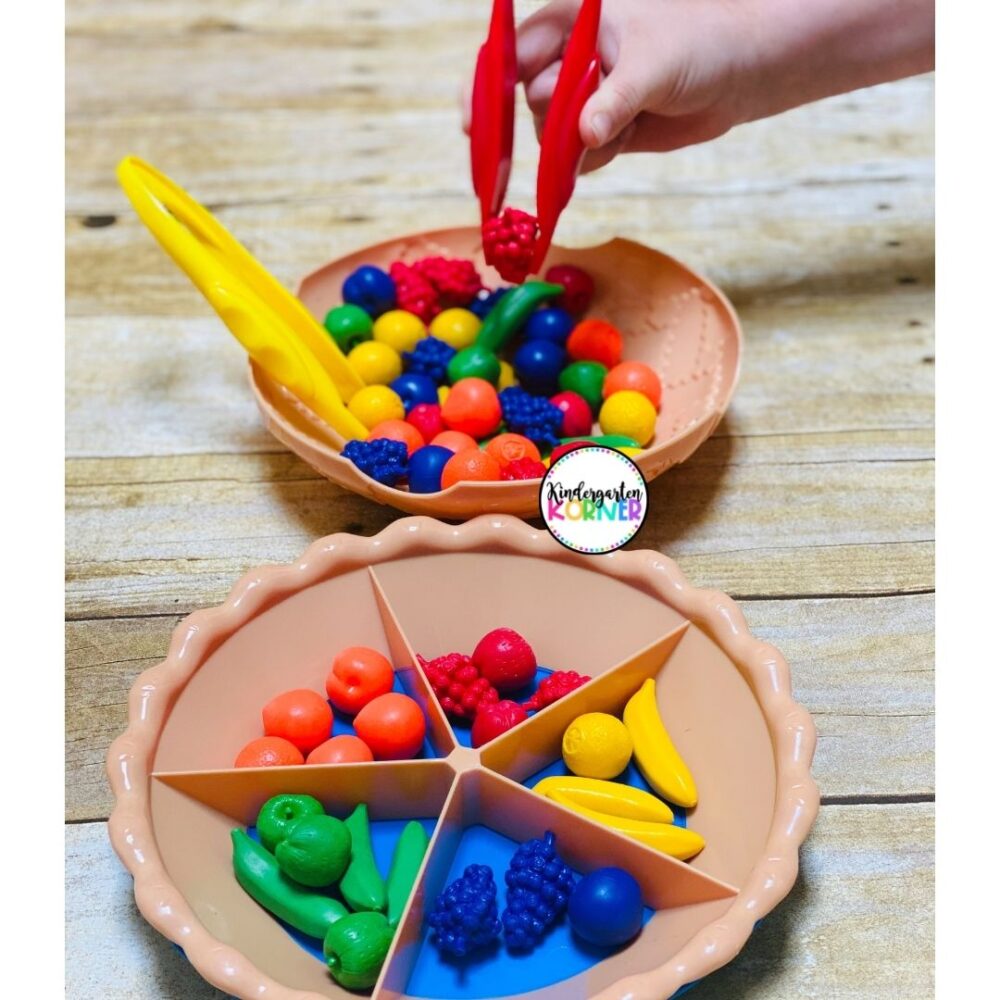
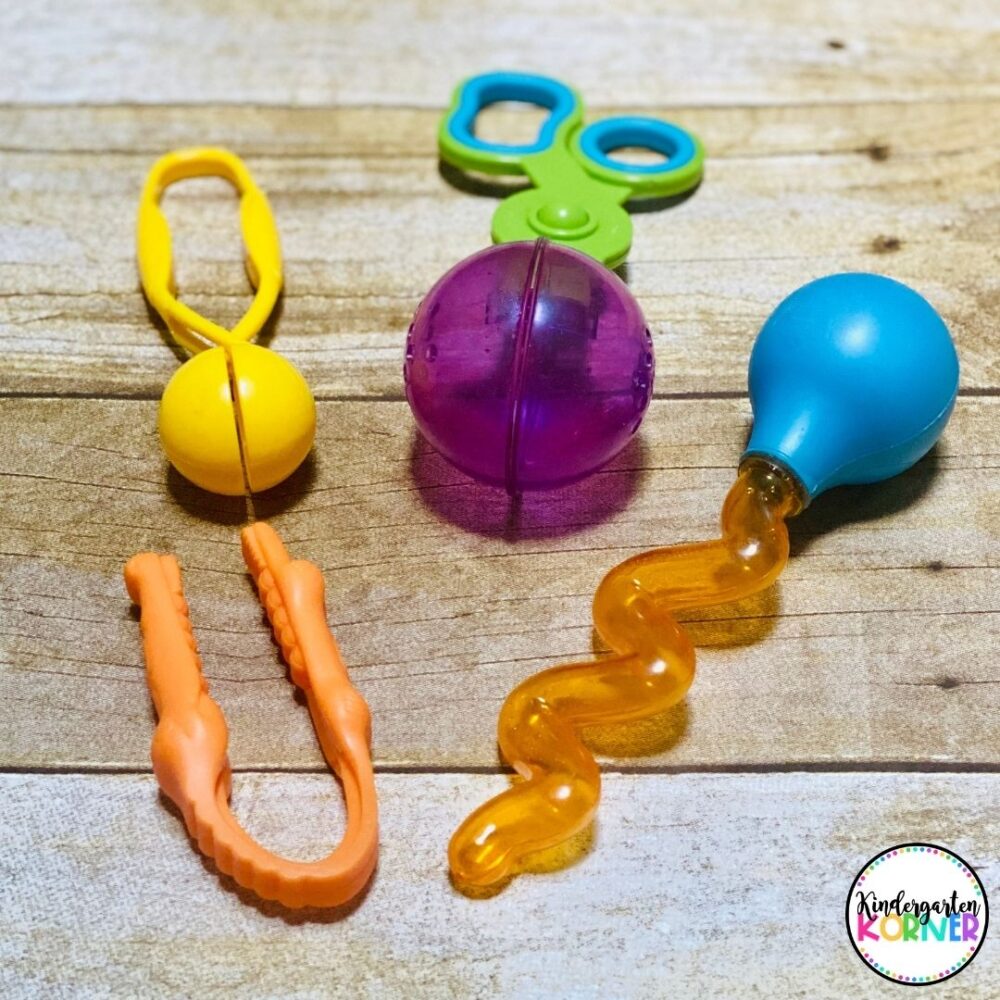
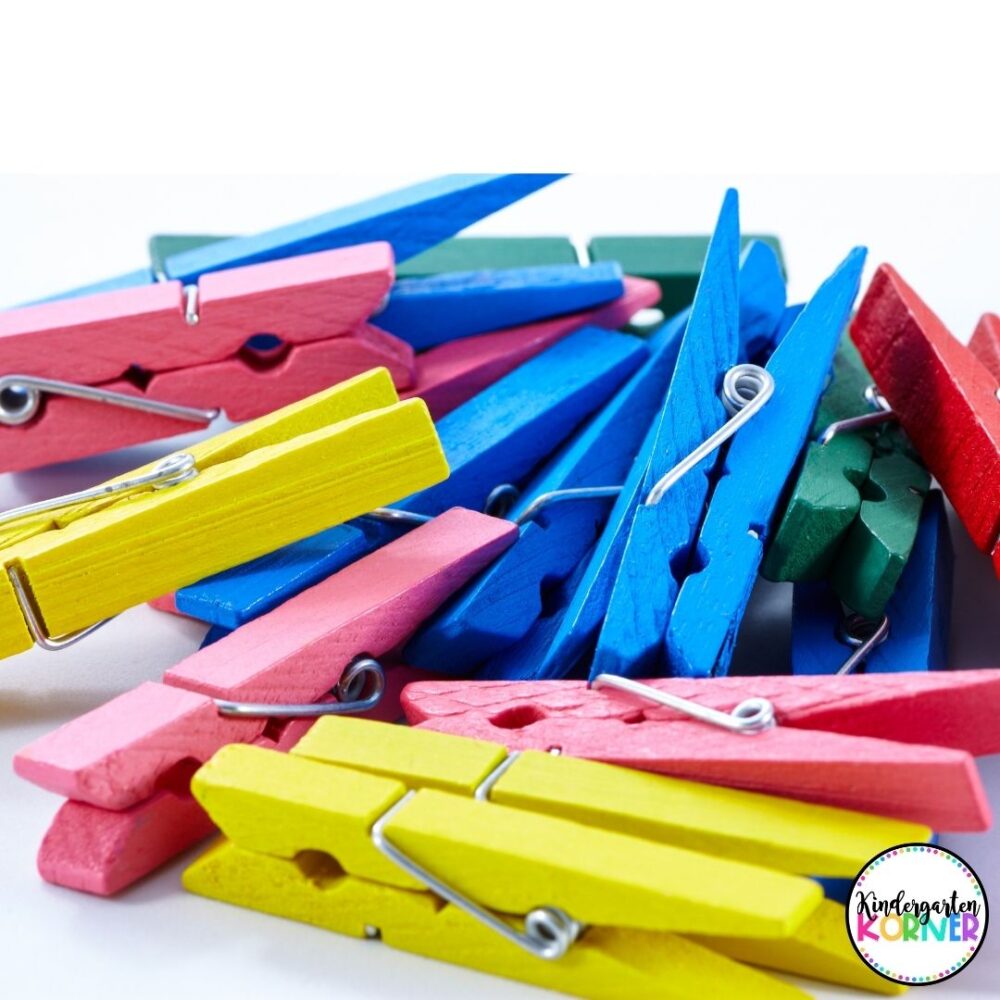
Thank you so much. I’m a teacher’s s aide and I try to help the great teacher I work with all problems in classroom.
Your work is so important! I’m sure your teacher is appreciative of all you do. I don’t have an aide and wish I did. I’m so glad you found this helpful!
~Casey
What kind of notepad is the child using in the photo with the pencil gripper?
Hello, I’m not sure. It is a stock photo. 🙂
Thank you for your post! My son developed some incorrect writing habits in kindergarten this past school year and I didn’t realize it was happening – mom fail :(. We are trying to correct them before we begin our homeschool journey this fall and it’s been a struggle. Thanks for these tips! Regarding the pencil grips, I see a similar item that also has a sort of loop on the back for the middle finger. Do you have thoughts on that one? Do you prefer the one you linked to that doesn’t have that loop on the back? Thanks!!
At what age would you expect a child to have a proper grip? Three of my children had a good pencil grip by kindergarten. One of them is only 2 and already has a good pencil grip. My 4 year old still grips with her fist, and I’m wondering if I can expect it to self-correct or if I should start working on it now.